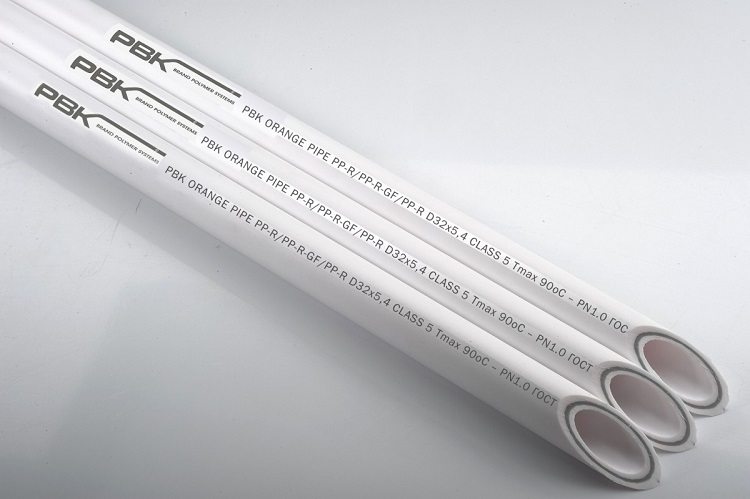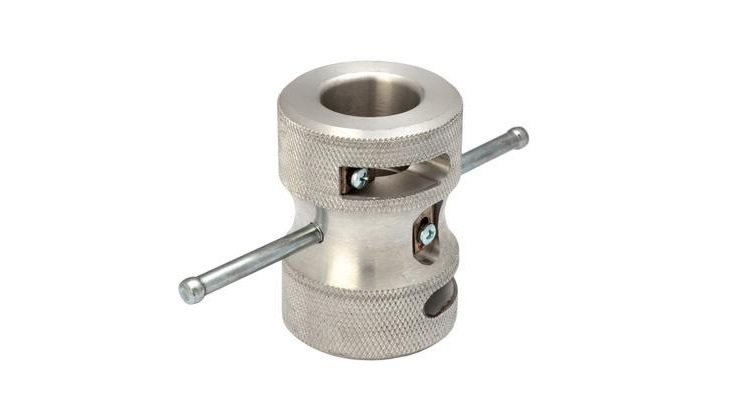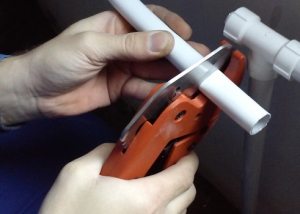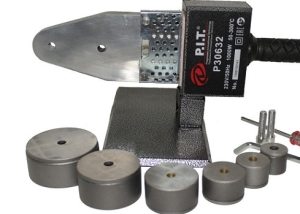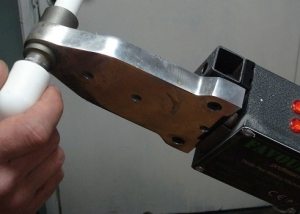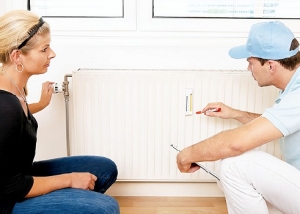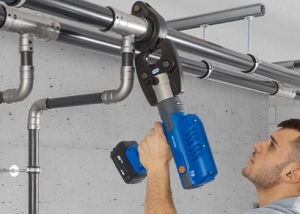Pipes made of polymer materials can be used many times longer than metal counterparts. But their service life largely depends on how well the installation work was done. One of the conditions for long-term and trouble-free operation of polypropylene pipes is their proper cleaning, since irregularities in the cut and burrs interfere with high-quality connection. Already at the planning stage laying of a polypropylene pipeline you need to understand why such a procedure is needed and with what tools it is carried out. Particular attention should be paid to pipes with a reinforcing layer.
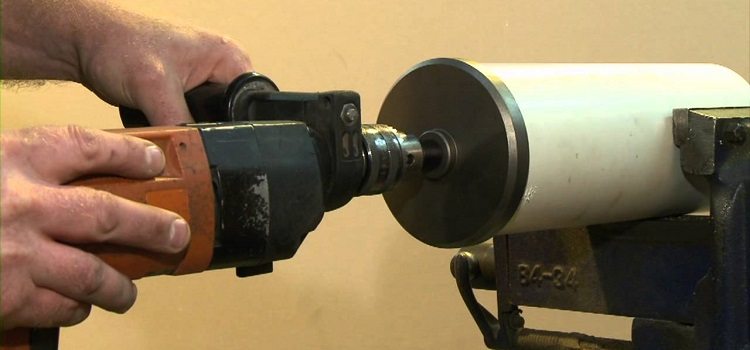
Cleaning the edge of the pipe - a mandatory procedure before connecting the elements of the pipeline
Content
What gives reinforcement of polypropylene pipes
The positive properties of reinforced polypropylene pipes are achieved due to the presence of a protective layer. In pipes used at home, its thickness does not exceed 0.1-0.5 mm. Reinforcement is necessary for:
- Reducing the temperature effects on the polymer. In general, polypropylene pipes can withstand high temperatures. The upper threshold is 95 degrees. In theory, this should be enough for home heating systems and water supply. But in some situations, including emergency ones, the temperature of the transported liquid can rise. This causes deformation of the pipeline sections. Aluminum foil increases the ability of the pipe to withstand high temperatures and prevents system ruptures.
- Compensation for thermal expansion. The main disadvantage of polypropylene pipes is a significant expansion at temperature extremes. With a sharp expansion, and then narrowing, polypropylene loses its plastic properties and gradually crackes. This property is not the best way affects the safety of pipes without reinforcement.
But the reinforcement is also a little difficult welding of polypropylene pipelines, therefore, for installation you just have to resort to stripping the pipe. Scraping with this type of pipe is the removal of a thin layer of aluminum foil.
Methods for stripping polypropylene pipes
There are several types of stripping, depending on the type of reinforcing layer.
The outer layer. If aluminum foil is the outer protective layer of the polypropylene pipe, it will interfere with the procedure for connecting to the fitting. During installation, the entire pipe section that is part of the fitting melts. If the pipe is not peeled, the following will happen: the molten aluminum will not weld with the polypropylene melt, and the connection will be depressurized immediately after the system starts up.
The inner layer. Although the aluminum located between the polypropylene layers will not be involved during welding, cleaning work is still worthwhile. The cleaning of the reinforcing layer is necessary so that aluminum does not come into contact with water. At any potential jump inside the pipeline, electrochemical processes can begin, which will ultimately lead to the complete destruction of the aluminum layer.
Helpful advice! The reinforcing layer of aluminum is solid and perforated. If the task is to choose between these two options, you should still turn to the latter. The perforated inner layer of the foil has better adhesion and does not require glue. Stripping perforated reinforcement is a faster process.
Fiberglass reinforcement. In this case, stripping for polypropylene pipes is not used. A thin fiberglass mesh is located between the polymer layers, does not experience moisture and does not come into contact with the fitting. Reliable fastening of fiberglass polypropylene pipes can be obtained without additional work. But the thermal expansion coefficient of such structures will be higher than that of pipes reinforced with aluminum.
What are the tools for stripping polypropylene pipes?
The tool with which you can clean the pipe can be manual or mechanical. Hand tools - this is the best option for cleaning work at home. There are such varieties of cleaning tools for polypropylene pipes:
- stripping for the outer layer. Couplings with blades in the middle are used to remove the outer layer of reinforcing foil. The cleaning couplings are equipped with convenient handles, which makes the workflow quick and easy. Handles can also be removable;
- milling cutters. The blades in the miter cutters are not placed on the surface of the metal coupling, but on its inner end. A pipe is put on the tool and rotated several times. In a minute, you get the perfect cut, and the polypropylene pipe is completely ready for welding. Such tools are also used for processing other types of plastic pipes, including without a reinforcing layer.
- a special nozzle for an electric drill - a shaver. On sale you can find devices that allow you to simultaneously clean both the outer and inner layers of the pipe. For different types of reinforcement special nozzles are selected, different in diameter.
The use of cleaning nozzles for a drill is optional: if you have to perform a small amount of work, you can do it yourself. In addition, powerful drills and screwdrivers are difficult to operate. If there is not enough experience in handling such equipment, it is better not to resort to its help at all.
Note! Do not confuse pipe cleaning with the cleaning process of metal products. This is a completely different kind of work, and special technological equipment is used for it.
The following tools are also useful for cleaning and installing polypropylene pipes with your own hands:
- a construction or simple pencil for marking a piece of pipe included in the fitting;
- roulette;
- pipe cutter, scissors or hacksaw for cutting pipes;
- soldering iron for polypropylene structures;
- selected stripping tool.
A smooth and smooth cut of the polypropylene pipe is achieved due to the high alloy steel from which the knives of the stripping tools are made. It is better to choose a two-sided hand tool. It will allow cleaning pipes of different diameters.
Cleaning polypropylene pipes is a simple process that can be done with your own hands without any special preparation. You should not buy an expensive tool if preparation for welding several products is required. Even simple steel fixtures can provide a high-quality and accurate result.
